Puerto Rican Euphonia
Euphonia sclateri
Endemic to Puerto Rico, where it occurs in most forested habitats, both dry and wet, at all elevations, throughout the island. Sporadic in many areas as it moves in response to the availability of food sources such as fruiting mistletoe.
Identification
Unique on Puerto Rico, where it the only euphonia. Male has a powder-blue crown and nape, glossy violet-black mask and upperparts, a brownish-orange forehead patch, and yellow-to-orange underparts (including the throat).
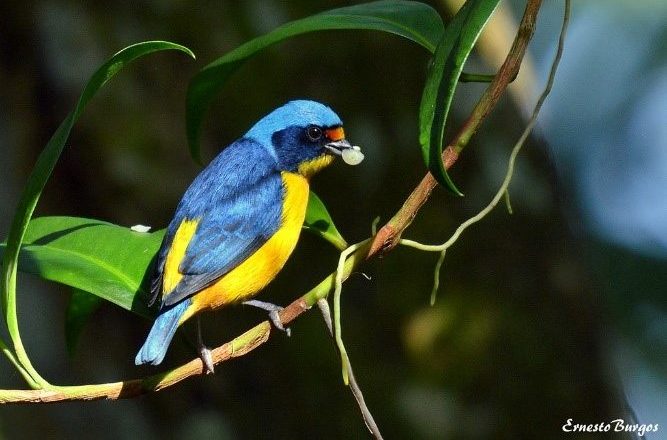
Puerto Rican Euphonia, male. (Barrio Naranjo, Comerío, Puerto Rico; August 27, 2016.) © Ernesto Burgos
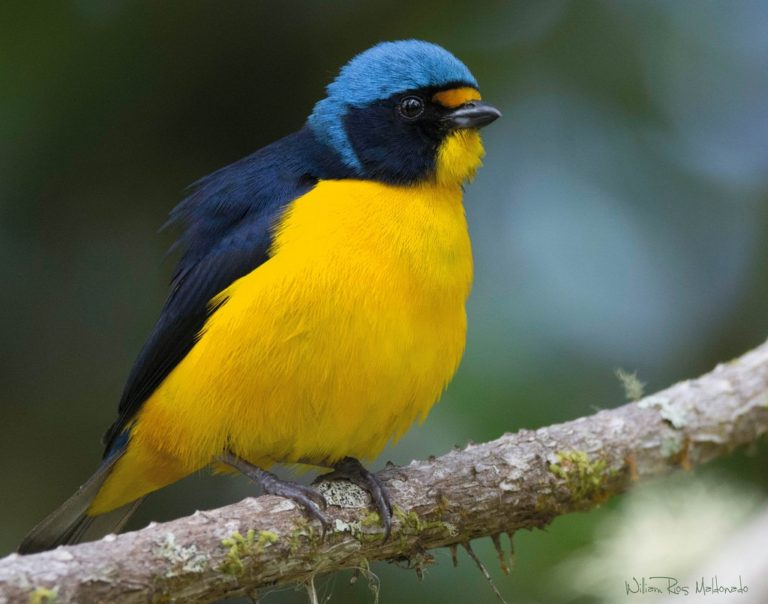
Puerto Rican Euphonia, male. (Cayey, Puerto Rico; March 23, 2017.) © William Rios Maldonado
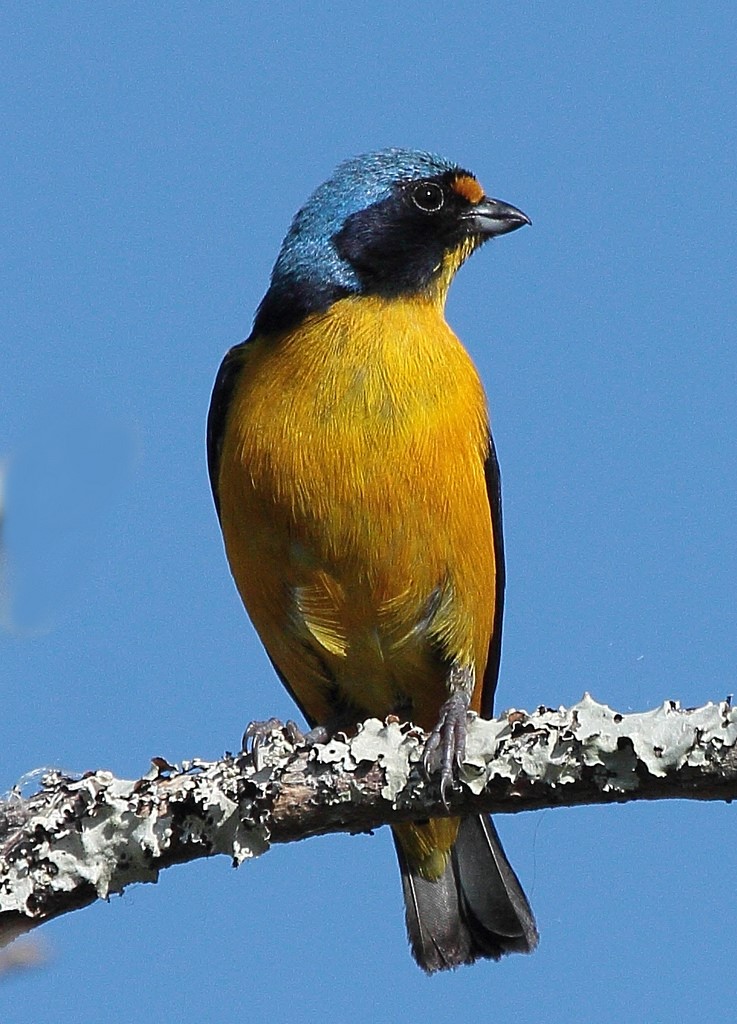
Puerto Rican Euphonia, male. (Cidra, Puerto Rico; March 24, 2014.) © Rene Odelde
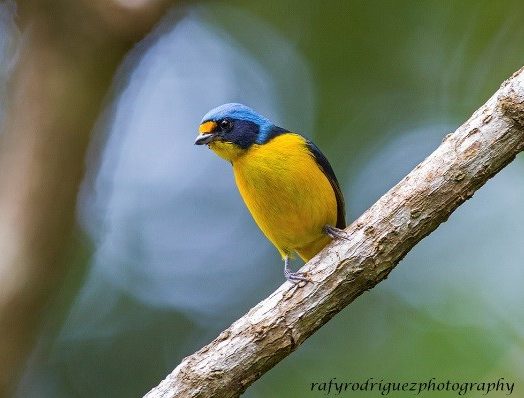
Puerto Rican Euphonia, male. (Maricao State Forest, Puerto Rico; September 12, 2014.) © Rafy Rodríguez
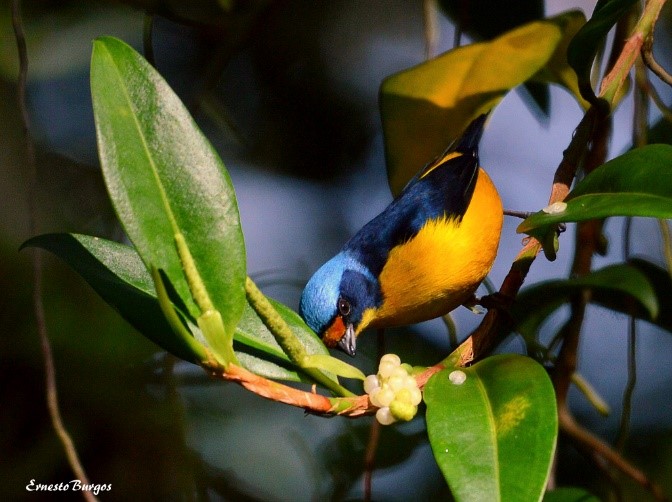
Puerto Rican Euphonia, male. (Barrio Naranjo, Comerío, Puerto Rico; August 27, 2016.) © Ernesto Burgos

Puerto Rican Euphonia, male. (Barrio Naranjo, Comerío, Puerto Rico; February 11, 2014.) © Ernesto Burgos

Puerto Rican Euphonia, male. (Barrio Naranjo, Comerío, Puerto Rico; February 11, 2014) © Ernesto Burgos
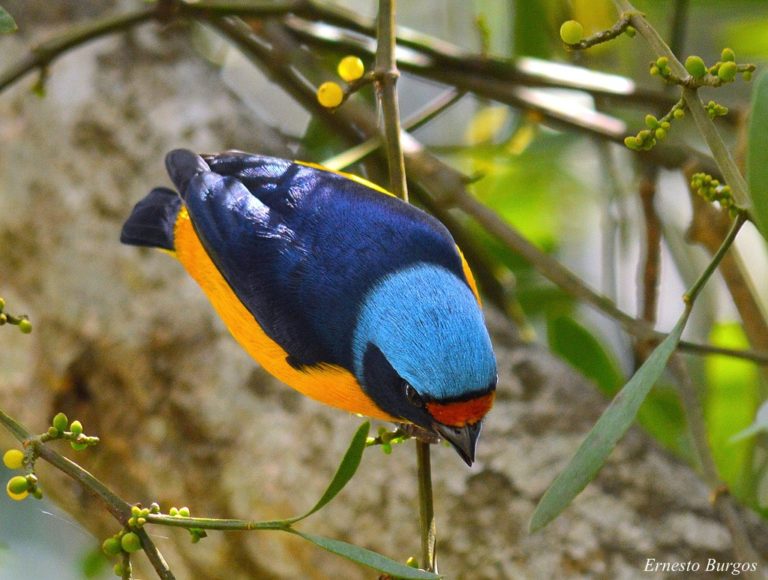
Puerto Rican Euphonia, male. (Bosque Aguirre, Guayama, Puerto Rico; September 15, 2013) © Ernesto Burgos

Puerto Rican Euphonia, male. (El Yunque National Forest, Puerto Rico; July 26, 2013.) © Jacob C. Cooper
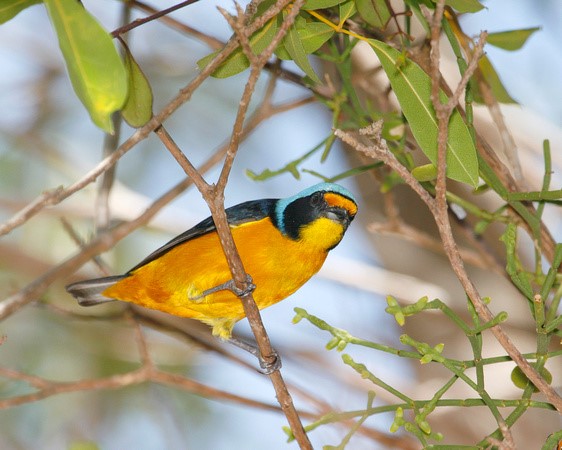
Puerto Rican Euphonia, male. (October 6, 2007.) © Alfredo Colón
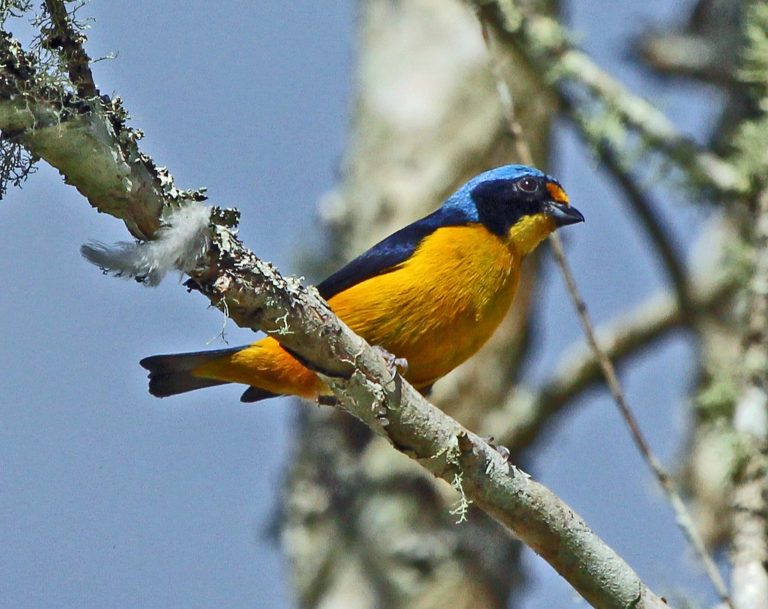
Puerto Rican Euphonia, male. (Cidra, Puerto Rico; March 24, 2014.) © Rene Odelde
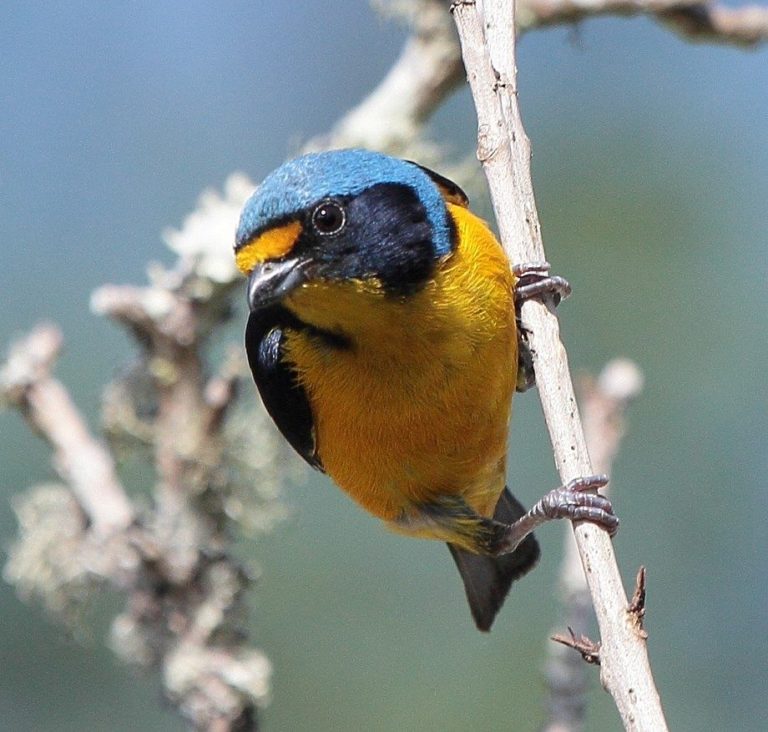
Puerto Rican Euphonia, male. (Cidra, Puerto Rico; March 24, 2014.) © Rene Onelde
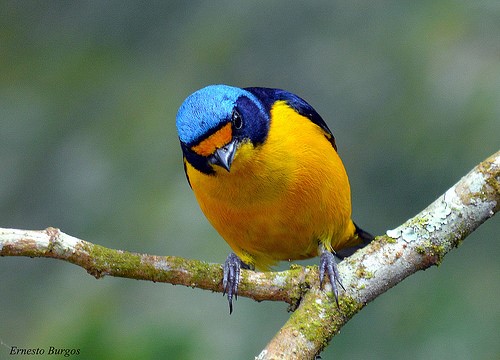
Puerto Rican Euphonia, male. (Barrio Naranjo, Comerío, Puerto Rico; February 11, 2014) © Ernesto Burgos
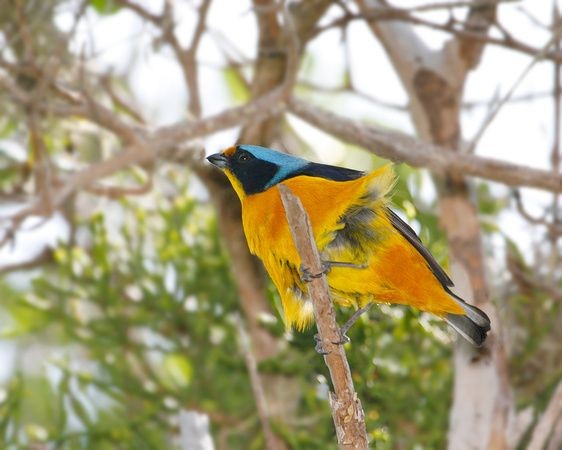
Puerto Rican Euphonia, male. (October 6, 2007.) © Alfredo Colón

Puerto Rican Euphonia, male. (Barrio Naranjo, Comerío, Puerto Rico; February 11, 2014) © Ernesto Burgos
Female shares the male’s overall pattern and powder-blue crown and nape, but with olive mask and upperparts, an orange forehead patch, and dingy, greenish-yellow underparts.
Immature is dingy olive overall, yellower below, with a yellow forehead patch and usually some blue on the crown.

Puerto Rican Euphonia, female. (Bosque Aguirre, Guayama, Puerto Rico; September 15, 2013) © Ernesto Burgos
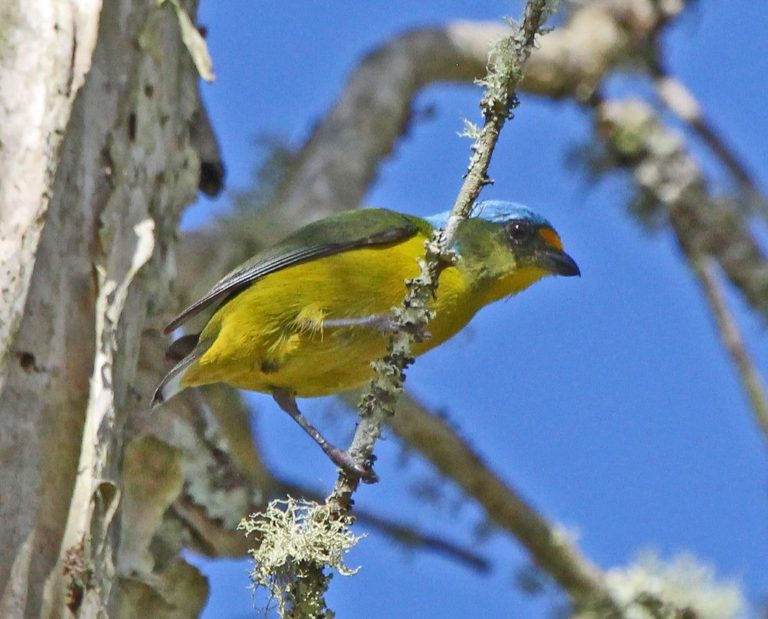
Puerto Rican Euphonia, female. (Cidra, Puerto Rico; March 24, 2014.) © Rene Odelde
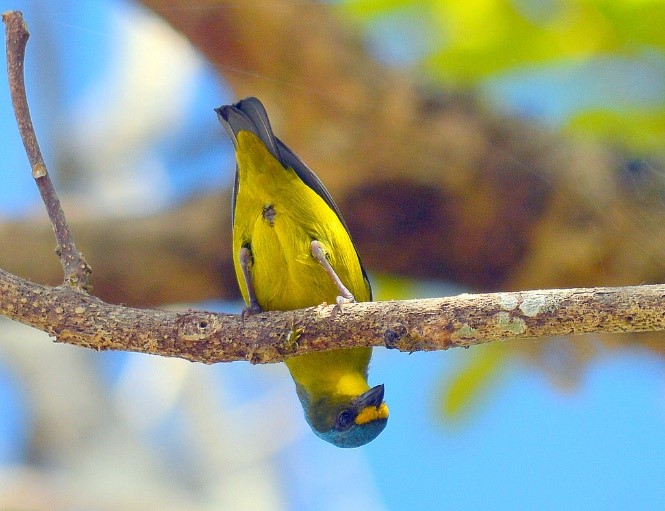
Puerto Rican Euphonia, female. (Barrio Naranjo, Comerío, Puerto Rico; February 11, 2014.) © Ernesto Burgos

Puerto Rican Euphonia, female. (August 10, 2015) © Ernesto Burgos

Puerto Rican Euphonia, immature. (Cidra, Puerto Rico; March 24, 2014.) © Rene Onelde
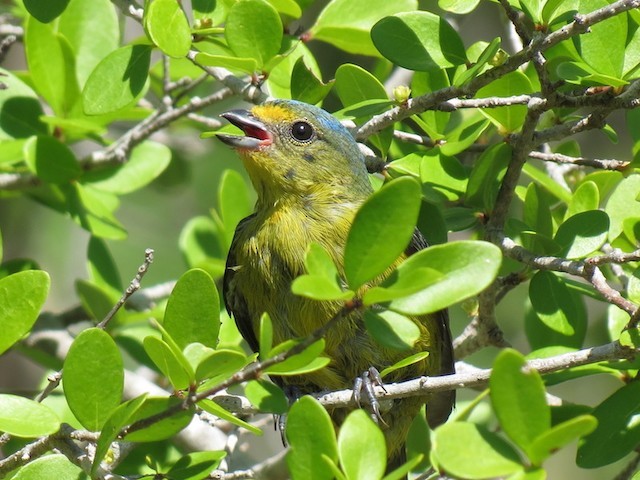
Puerto Rican Euphonia, immature. (Guánica State Forest, Puerto Rico; January 11, 2016.) © Andrew Kinslow
Notes
Monotypic species. Traditionally considered conspecific with Hispaniolan and Lesser Antillean Euphonias, collectively the Antillean Euphonia, E. musica.
Frontiers of Taxonomy: Three Species of Antillean Euphonias. Hispaniolan, Puerto Rican, and Lesser Antillean Euphonias (E. musica, sclateri, and flavifrons) have long been classified as a single species, the Antillean Euphonia (E. musica) but the three forms differ significantly in plumage, morphology (e.g., tail length), and vocalizations. The differences are so conspicuous that it seems inexplicable that they were ever considered conspecific. The failure to designate these forms as separate species appears to be a long-standing oversight of Caribbean ornithology that is certain to be corrected.
References
del Hoyo, J., and N. Collar. 2018. Puerto Rican Euphonia (Euphonia sclateri). In Handbook of the Birds of the World Alive (J. del Hoyo, A. Elliott, J. Sargatal, D.A. Christie and E. de Juana, eds.). Lynx Edicions, Barcelona. http://www.hbw.com/node/1344122. (Accessed November 21, 2018.)
eBird. 2018. eBird: An online database of bird distribution and abundance. Cornell Lab of Ornithology, Ithaca, N.Y. http://www.ebird.org. (Accessed November 21, 2018.)
Isler, M.L., and P.R. Isler. 1987. The Tanagers: Natural History, Distribution, and Identification. Smithsonian Institution Press, Washington, D.C.
Raffaele, H., J. Wiley, O. Garrido, A. Keith, and J. Raffaele. 1998. A Guide to the Birds of the West Indies. Princeton University Press, Princeton, N.J.
